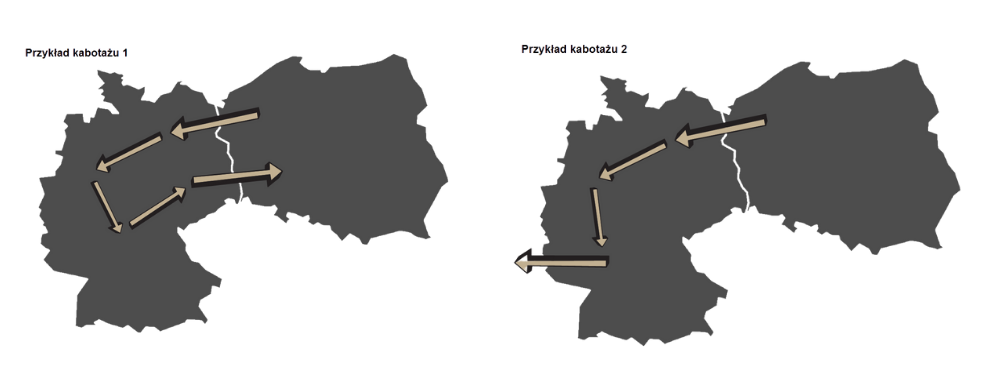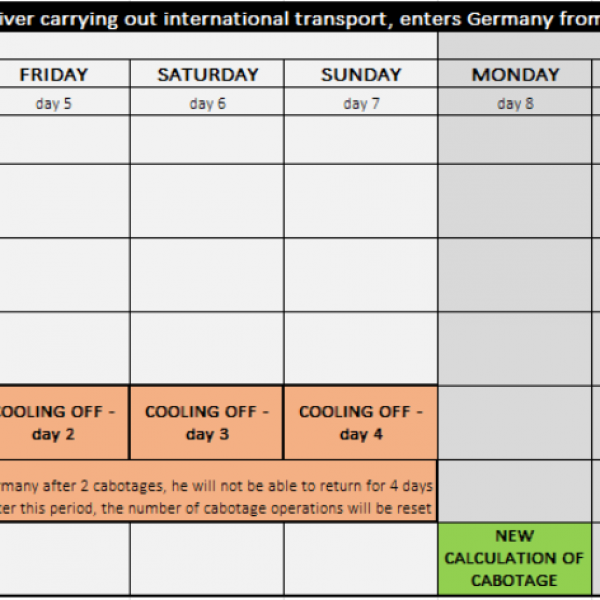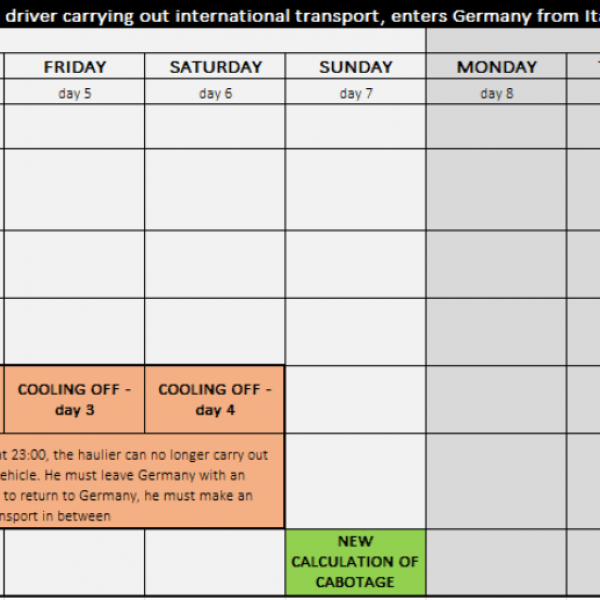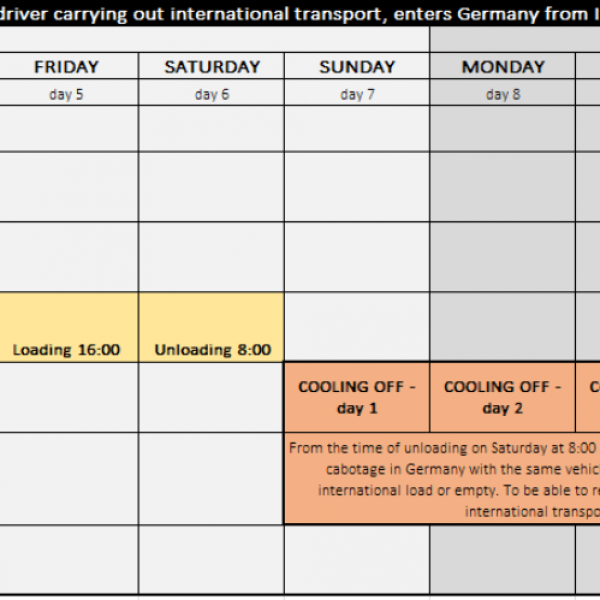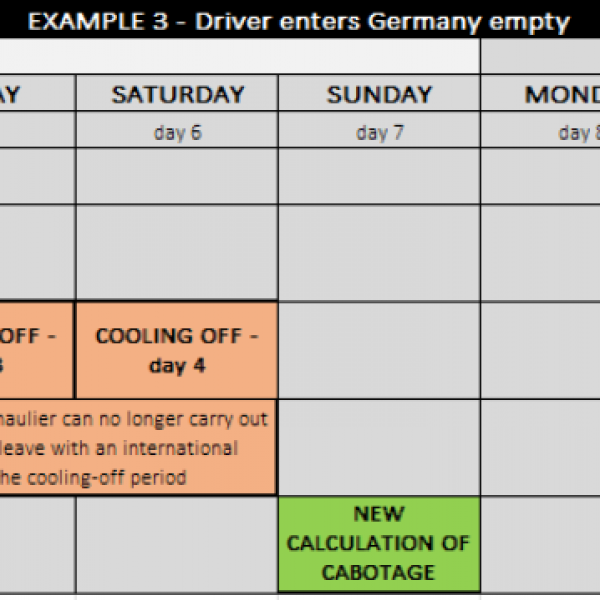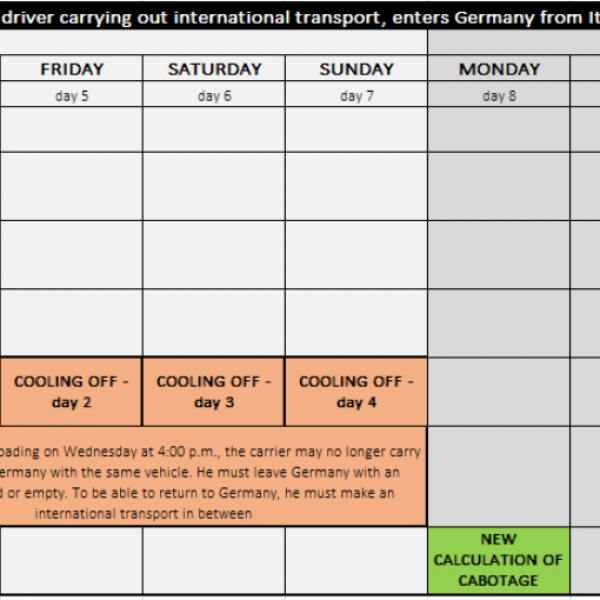According to the Mobility Package Regulation, from 21.02.2022, hauliers may not carry out cabotage operations with the same vehicle in the same Member State for 4 days after completion of the cabotage operation.
The completion of cabotage is considered as:
- the completion of 3 cabotage operations,
- the expiry of 7 days from the date of departure of the international carriage,
- leaving the country with the load in the international carriage after carrying out cabotage operations (regardless of their number).
In this case, cabotage operations may not be carried out again within a period of four days in the country concerned (this period is called the cooling-off period. Note that a day is counted from 00:00 to 24:00 - not to be confused with a clock day.
Example :
For both schedule 1 and schedule 2, once you have left Germany, you may not carry out cabotage in that country for 4 days using the same vehicle/combination of vehicles.






